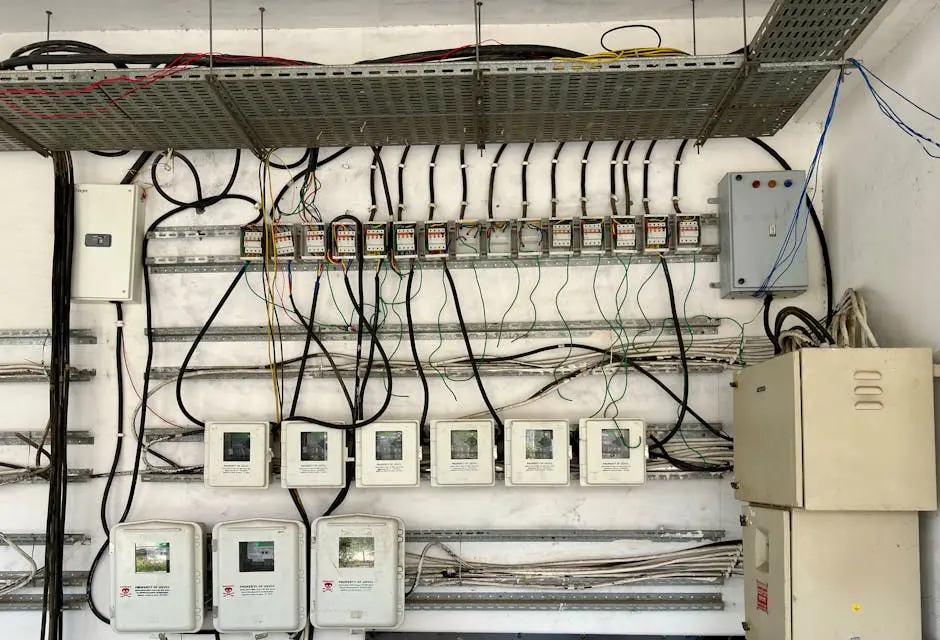
Exploring the Versatility of Terminal Connectors in Modern Electrical Systems
Share
Terminal connectors might seem like small, insignificant components in the grand scheme of electrical systems, yet they play a crucial role in ensuring safety, efficiency, and reliability. Whether you’re an engineer, electrician, or just curious about how these connectors contribute to modern electrical systems, this exploration will guide you through their varied applications and benefits.
Understanding Terminal Connectors: The Basics
At their core, terminal connectors are devices used to join two or more electrical circuits. They ensure that electrical connections are secure and stable, preventing faults and potential safety hazards. Let’s break down what makes terminal connectors essential components in electrical systems.
Terminal connectors come in various shapes and sizes, designed to suit specific functions and environments. Their fundamental role is to provide a point where electrical circuits can connect safely, creating a path for electrical flow. An important factor to consider is their capacity to handle varying currents, which makes choosing the right type of connector crucial for the system’s overall reliability.
From residential to industrial applications, terminal connectors are present across numerous domains. Their significance is not only in the role they play within broader systems but also in how they make maintenance and system modifications easier. Given their importance, the design and selection process involves careful consideration of several factors such as environmental conditions and electrical requirements.
Types of Terminal Connectors and Their Applications
There are several types of terminal connectors, each designed for specific applications. Depending on the requirements, you might come across screw terminals, spade terminals, or ring terminals, among others. Understanding these types helps us appreciate their unique characteristics and uses.
Screw terminals are commonly used due to their reliability in securing wires. They are particularly useful in environments where vibrations occur, as the screws ensure a stable connection. On the other hand, spade terminals are often employed in automotive and household applications because they allow for quick and easy connections. Moreover, ring terminals provide a secure connection that prevents accidental disconnection, making them popular in industrial settings.
Each type comes with its advantages and limitations. For instance, while screw terminals offer strong connections, they can be more time-consuming to install. Similarly, ring terminals might require more space but are ideal for environments where connection stability is non-negotiable. This diversity allows professionals to choose the best connector based on the specific demands of their projects, ensuring efficiency and safety.
The Role of Terminal Connectors in Enhancing Safety and Efficiency
One of the primary roles of terminal connectors in electrical systems is to enhance safety and operational efficiency. By ensuring stable connections, they minimize the risk of short circuits and other electrical malfunctions, which can lead to equipment damage or personal injury.
Beyond preventing malfunctions, terminal connectors also promote efficient energy flow. This efficiency reduces energy waste and can significantly lower operational costs, especially in large-scale operations. For this reason, both the durability and conductivity of material are key considerations in their manufacturing, influencing factors such as metal coatings and base materials used.
In safety-critical systems, the choice of terminal connector can dictate the margin between reliable operation and potential hazards. Selecting the right connectors ensures that connections hold under stress while also conforming to strict safety standards. This is particularly important in industries with stringent regulatory environments, where poorly chosen components could lead to compliance issues or worse, safety incidents.
Innovations and Future Trends in Terminal Connectors
As technology advances, so too does the design and functionality of terminal connectors. Innovations aim to meet the growing demand for more efficient, reliable, and environmentally friendly electrical connections. Exploring these future trends can give us insight into what lies ahead.
Modern terminal connectors are increasingly incorporating smart technology, enhancing their ability to monitor performance and diagnose issues automatically. This can drastically reduce maintenance times and improve system uptime. Some connectors now even offer integrated sensor technology, providing real-time data on connection status and environment conditions.
Sustainability is also becoming a driving factor in connector development. Manufacturers are now focusing on recyclable materials and energy-efficient production processes. As more industries strive to reduce their carbon footprint, these eco-friendly solutions are expected to become industry standards. Future innovations will likely focus on making connectors not just smarter and more reliable, but also more sustainable.
Wrapping Up: The Enduring Importance of Terminal Connectors
In conclusion, terminal connectors are far more than just functional components within electrical systems. Their versatility and ability to adapt to different use cases make them indispensable in both everyday and specialized applications. As technology and design evolve, so too will the role of terminal connectors, continuing to meet the challenges of our modern electrical demands.

